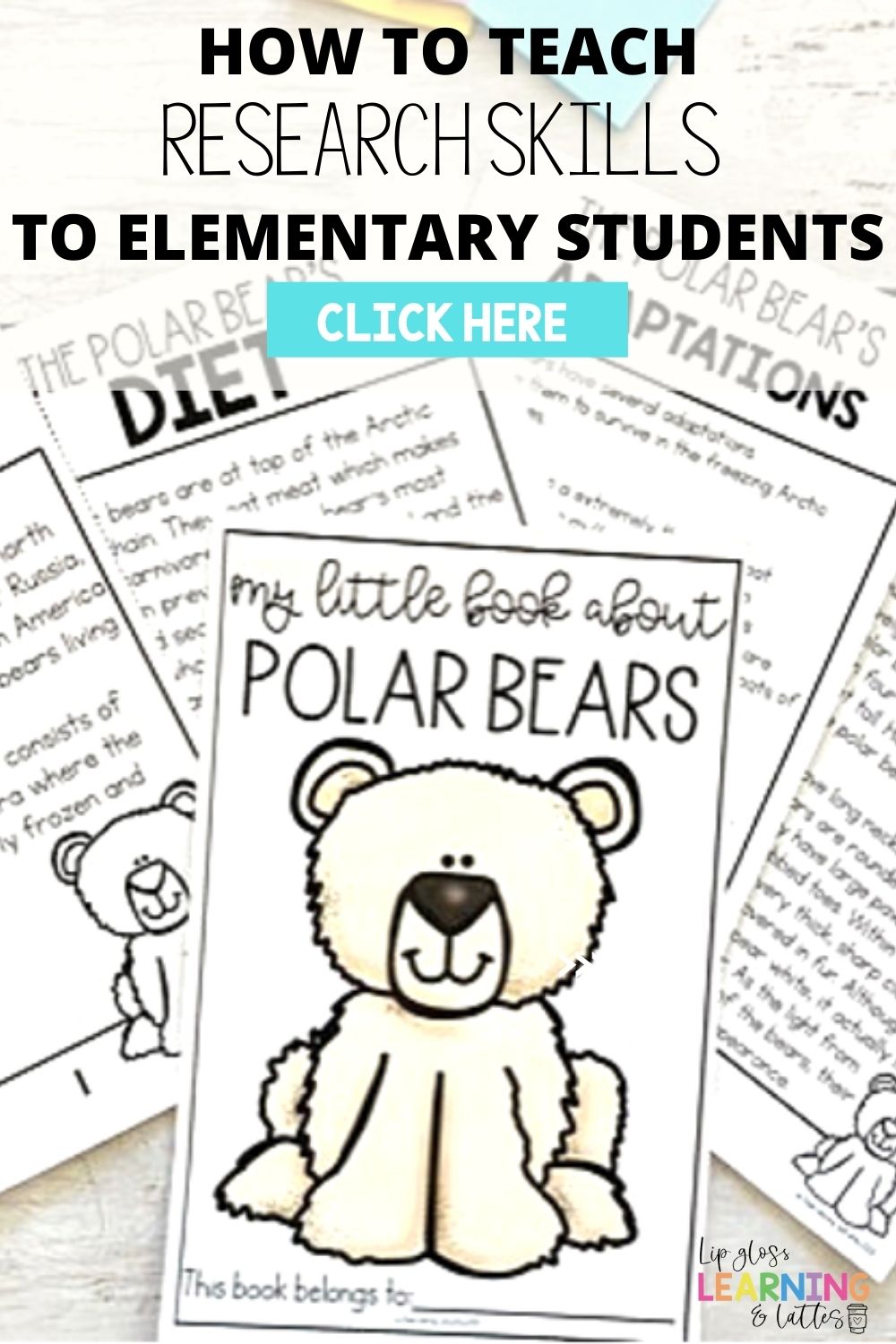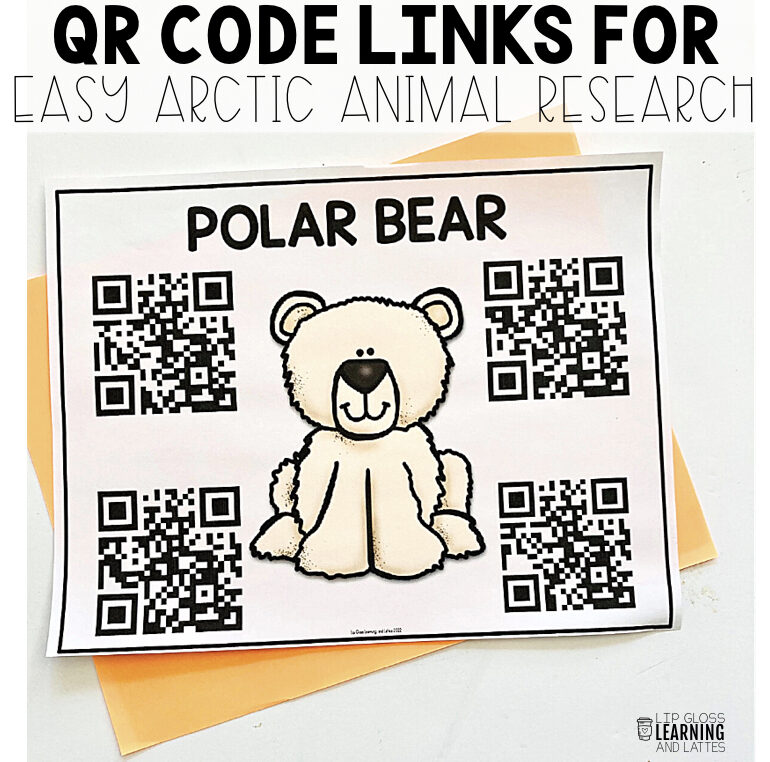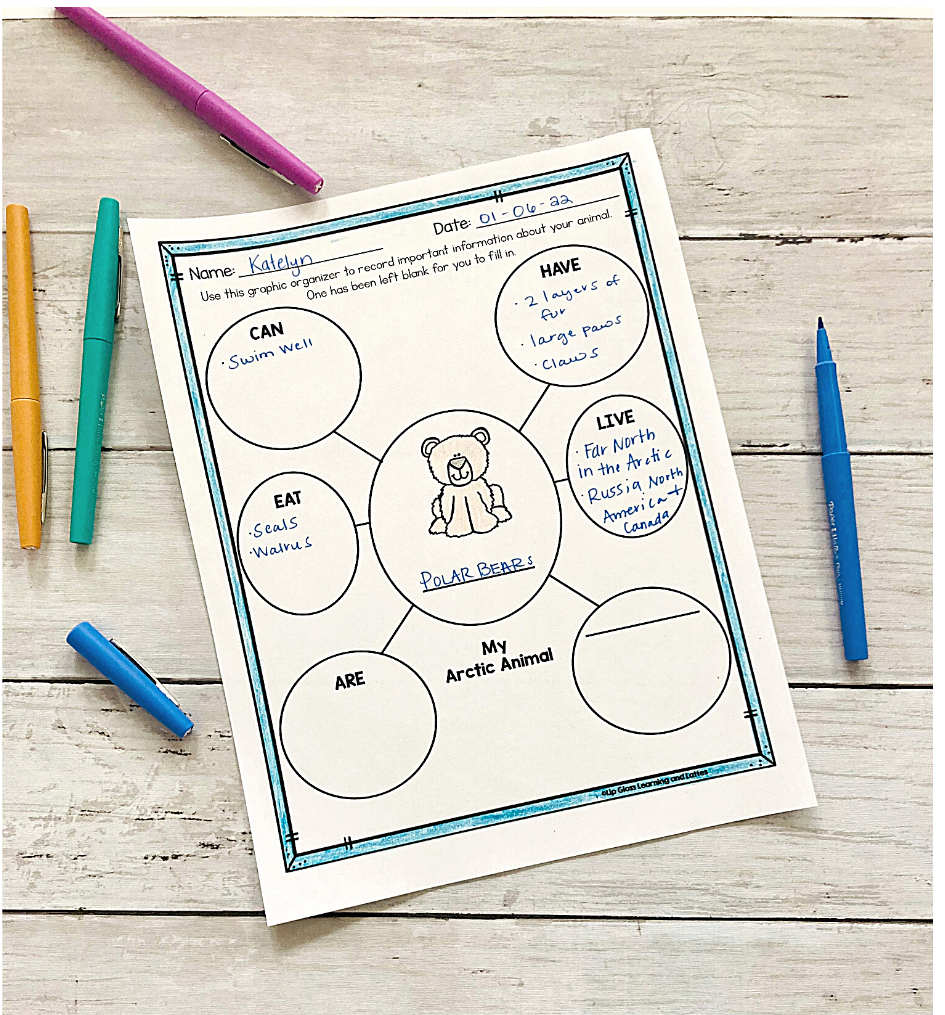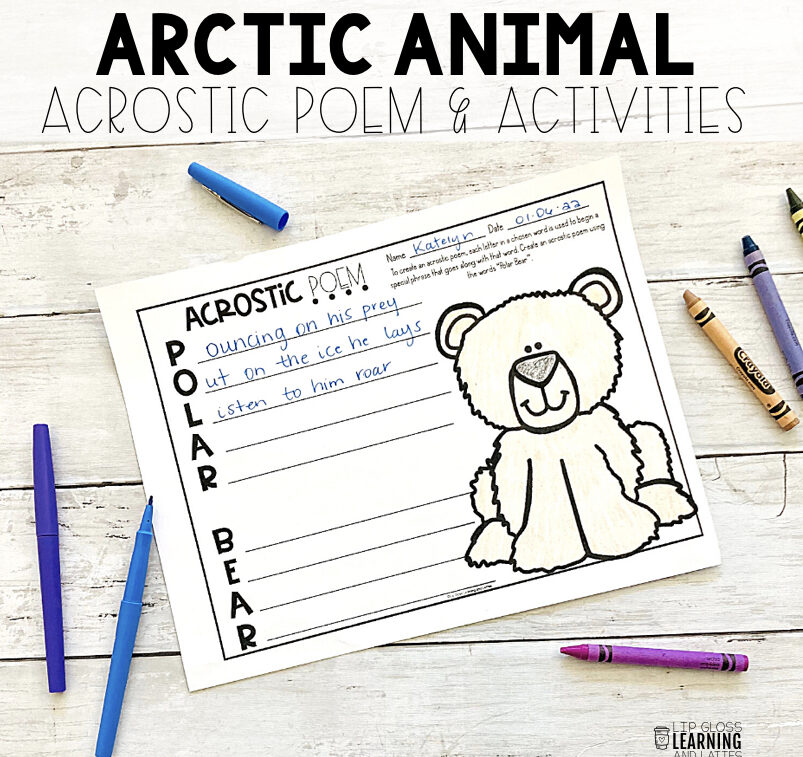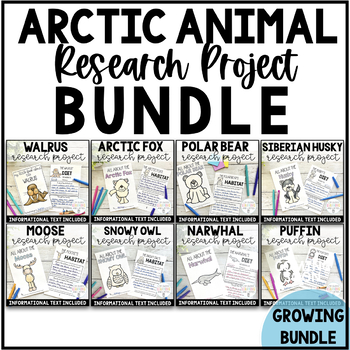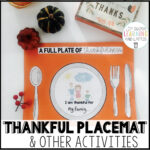Teaching Research Skills to Elementary Students
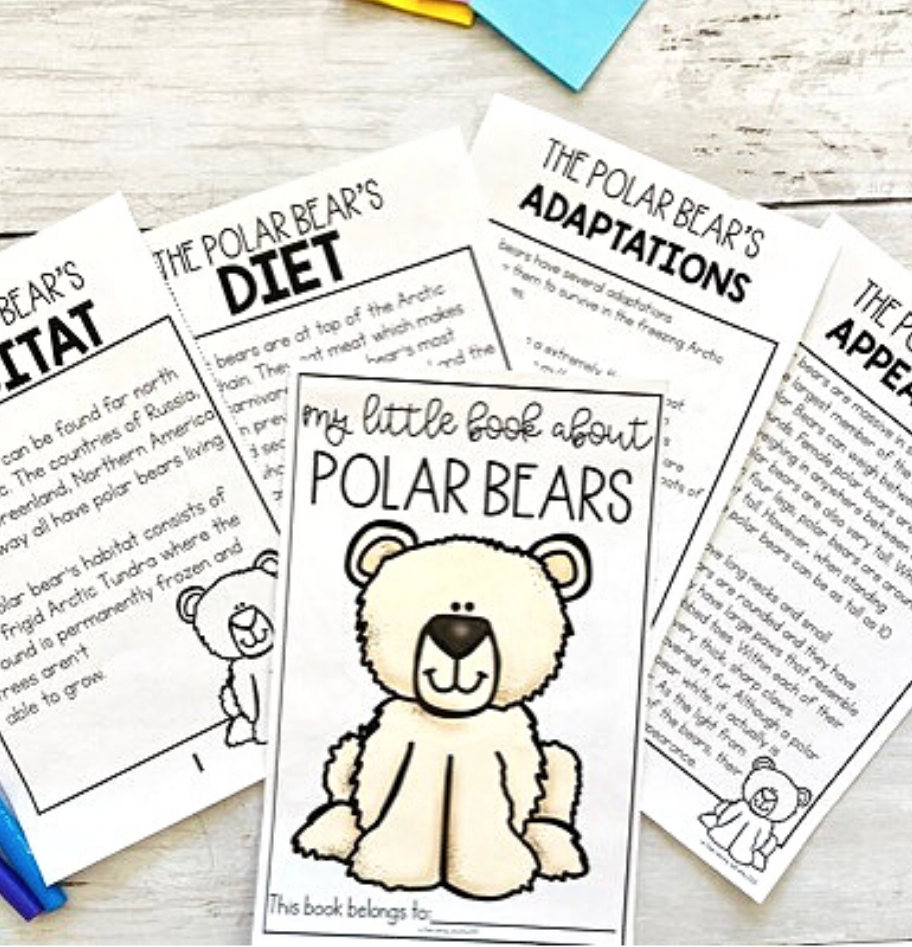
Research is a required skill that most students are expected to learn and practice. It’s important to give your students something that engages them when requiring them to spend several days researching it. That’s where animal research projects come in. Students LOVE researching animals! Today I’ll share tips for teaching research skills to elementary students in a way they are sure to love!
1. Model WiTH AN ANIMAL JUST RESERVED FOR YOU
To begin, and as with any writing project, it’s best to model each step for your students. I like to select one animal and go through the entire research and writing process along with students, step-by-step.
Usually, this animal will just be reserved for me, however sometimes students who need a lot of support benefit from using the same one that I model.
2. Research
The first day starts with researching about the animal. I model collecting information about my animal from an informational book, these fact sheets or using the QR code links I’ve created.
These QR Code links are great, because they are linked to kid friendly websites and videos all about the specific animal. This saves a lot of time because students aren’t typing in the search bar or trying to find a good website to do their research from.
I’ve also included Arctic animal informational mini books that cover all of the main topics students need when researching animals. These books are great because all of the information is there for them and each student can have his or her own copy.
Before diving too deep into researching specifics about the animal, I like to give students the opportunity to get familiar with their animals. Using a web like the one below to gather information, helps students begin thinking about the important information they want to share.
Included in my Arctic Animal Research unit are two different types of webs. One comes with labels like the one shown above and one comes without. This makes it easy to differentiate if you have higher students who are able to create their own topics.
3. Record Facts
The first day of actual research I’ll choose one to two topics such as diet and habitat. I model locating information about my animal’s habitat and what they eat. Then, as a class we’ll determine what information is important enough to record. This process may take 1-3 days. Each day, we’ll focus on a few different topics without overloading students on what they need to research.
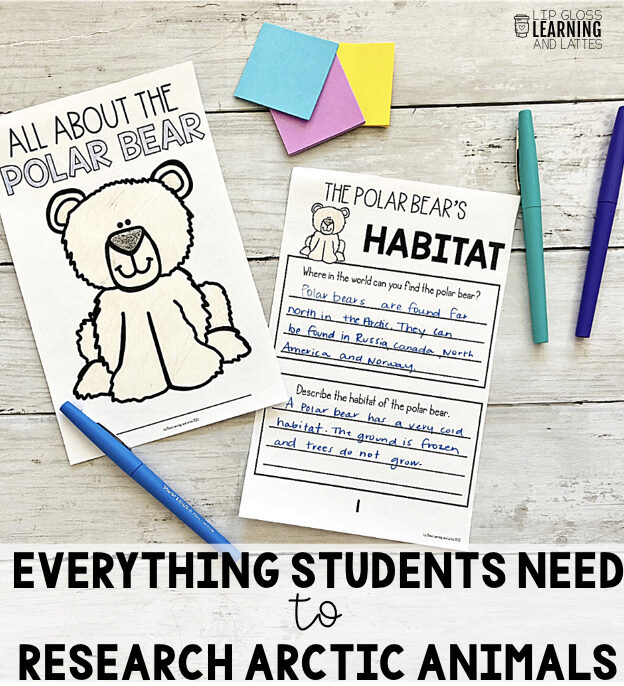
It’s crucial that students are able to locate important information and facts from the text.
Recording facts isn’t always the most fun, but these arctic animal student mini books help keep students engaged. They are also perfect for keeping your students organized rather than writing down every fact they come across in no particular order.
Each topic has questions to guide their research. So they are also perfect for keeping your students organized rather than have them write down every fact they come across in no particular order.
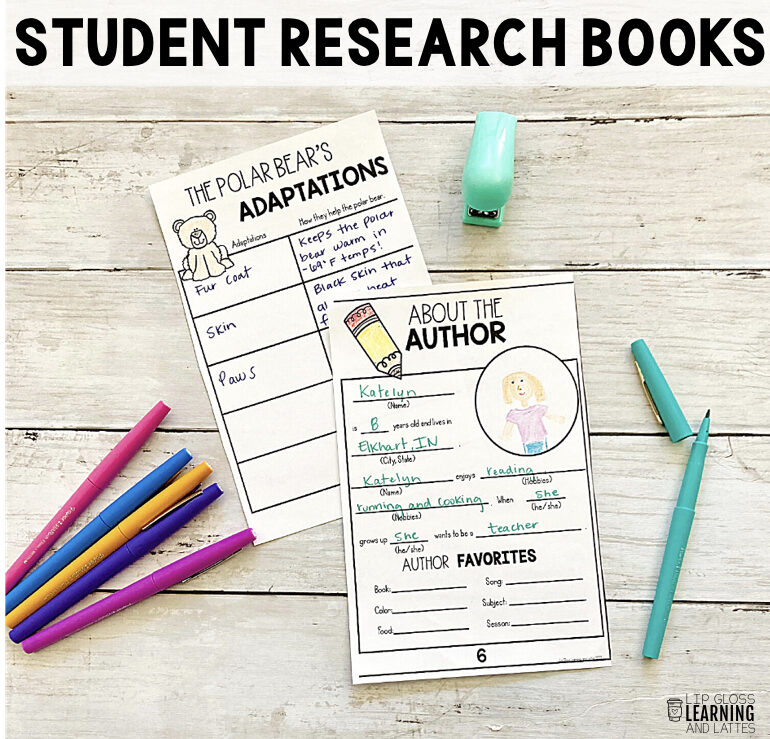
Students LOVE creating their own books about their animals. There’s even an “About the Author” page for students to tell a little about themselves at the end of the books
4. Write a Research Report
Such an important piece of comprehension is that students are able to take facts and information they’ve learned and explain them using their own words. Just like the research portion, I’ll model going through each step of the writing process with my students. I like to spend one day on the introduction, combine the body paragraphs into one day, and spend one day on the conclusion.
I always write each section either on the white board or a piece of anchor chart paper and leave it up while students are working on theirs. Having this model up for students to refer back to really helps some of the struggling writers.
(Inside of this Arctic animal research pack there are a few options for how your students can compose a final draft.)
You’ll also find lots of other activities inside of these Arctic animal research resources. Give your early finishers something to do using the animal word searches included or have them create an acrostic poem about the animal they are researching.

Are you looking for a simple, no-prep way to help your students write Arctic animal research reports? You can check out all that’s included in the growing bundle by clicking HERE.
What’s great about this bundle is that you can purchase at the low price now, and as more animal research projects are added, they become yours for FREE!
This resource is best suited for children in 2nd, 3rd and 4th grade.
Within this resource the Arctic animals habitat, diet, adaptation, appearance and Arctic animal babies are all covered.
You can see the entire bundle of Arctic Animal research HERE.
Looking for a specific Arctic animal to have your students research? Click on the links below to see each individual Arctic animal research project in my TPT store.
Polar Bear Research
Walrus Research Project
Siberian Husky Research Project
Arctic Fox Research Project
Moose Research Project
Puffin Research Project
Narwhal Research Project
Snowy Owl Research Project
Penguin Research Project (Non-Arctic Animal)
Save by bundling! Click HERE to check out the growing bundle for arctic animal research projects.
A Quick Tip: In order for your students to get the most out of the informational texts they use to do their research, it’s important they understand non-fiction text features and their purposes. You can read more about how I like to teach non-fiction text features by clicking HERE.

